When you buy products via links on our website, we might receive an affiliate commission. Learn more
15 Expert Tips for Bucket Gardening!
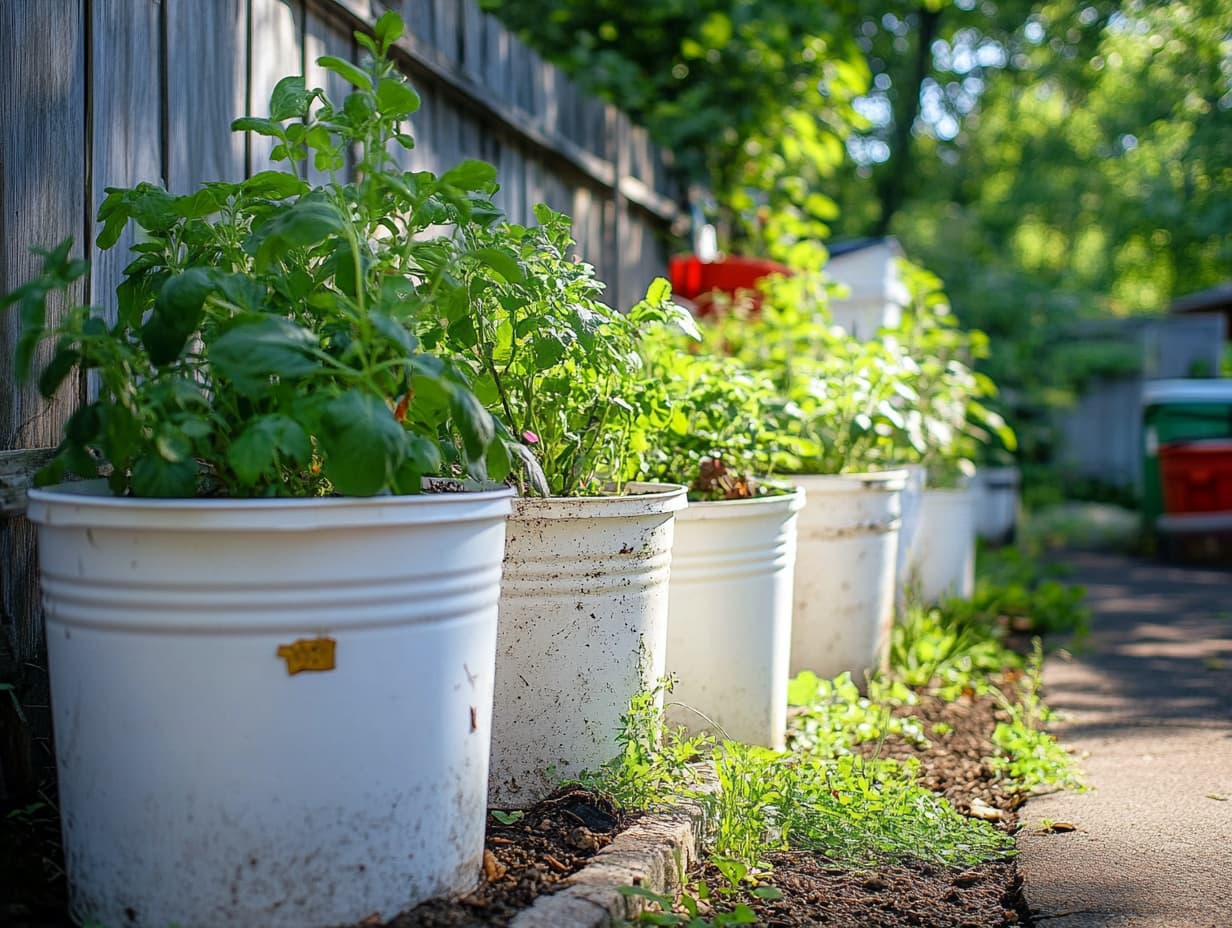
Bucket gardening offers an accessible and sustainable way to grow plants, making it ideal for small spaces, beginners, or anyone seeking a portable gardening solution.
With a little planning and care, this approach can yield lush greenery and fresh produce.
By utilising buckets creatively and applying efficient techniques, you can maximise your gardening potential in the most unexpected spaces. Dive into these comprehensive tips to master the art of bucket gardening.
Choose the Right Bucket
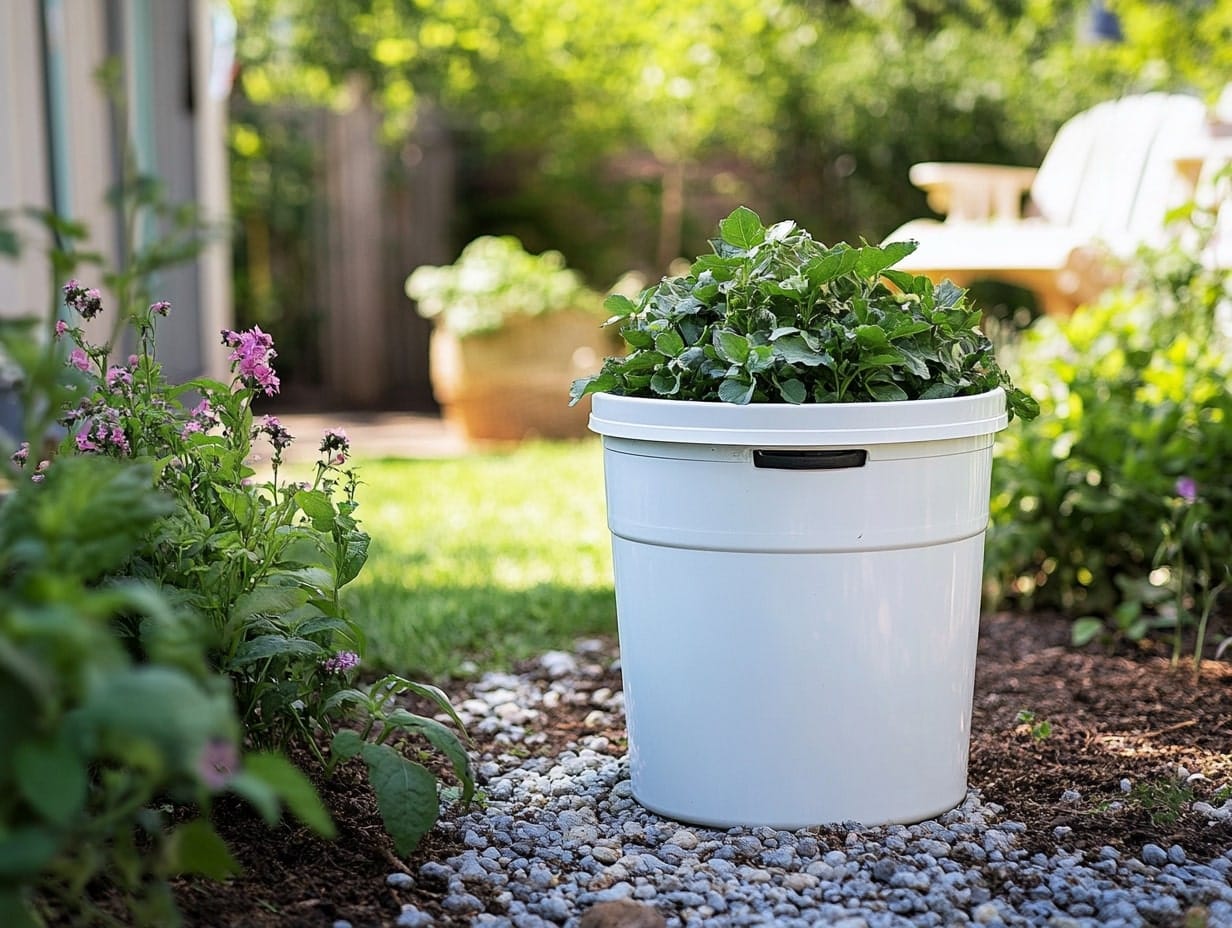
The foundation of successful bucket gardening lies in selecting appropriate containers. Opt for sturdy buckets, ideally with a capacity of at least 5 gallons, to accommodate a wide range of plants.
Food-grade buckets are essential for growing edibles, ensuring that no harmful chemicals leach into the soil.
Buckets in neutral or light colours help reflect heat, but decorative touches like paint or stencils can bring charm to your garden.
Ensure Proper Drainage
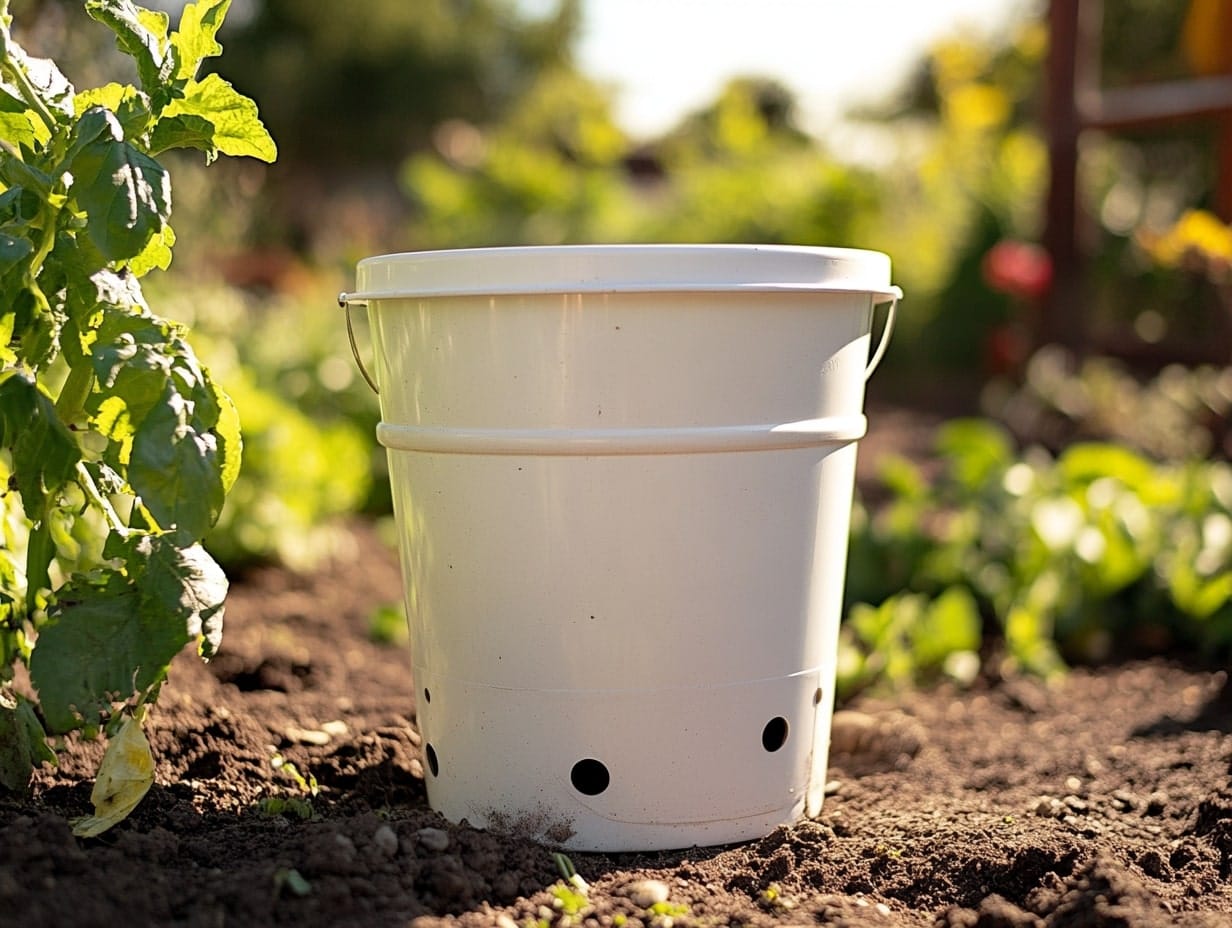
Buckets can quickly become waterlogged without adequate drainage, which may harm plant roots. Drill 6–8 evenly spaced holes in the bottom to allow excess water to escape.
Placing a layer of coarse gravel or broken pottery pieces at the base promotes better drainage and prevents soil from blocking the holes, ensuring roots remain healthy and aerated.
Use Quality Soil Mix

Invest in a well-draining, nutrient-rich potting mix tailored for container gardening. Garden soil alone is often too compact and can hinder root growth.
Add organic matter such as compost, peat moss, or coconut coir to boost fertility and water retention. For specific plant needs, mix in perlite or vermiculite to enhance soil aeration.
Position for Optimal Sunlight

The portability of bucket gardening allows flexibility in placing plants where they thrive. Identify the sunlight requirements of your chosen plants—most vegetables and flowering plants need 6–8 hours of sunlight daily.
If sunlight varies throughout the year, simply relocate your buckets to sunny spots or provide shade as required.
Select Plants Wisely
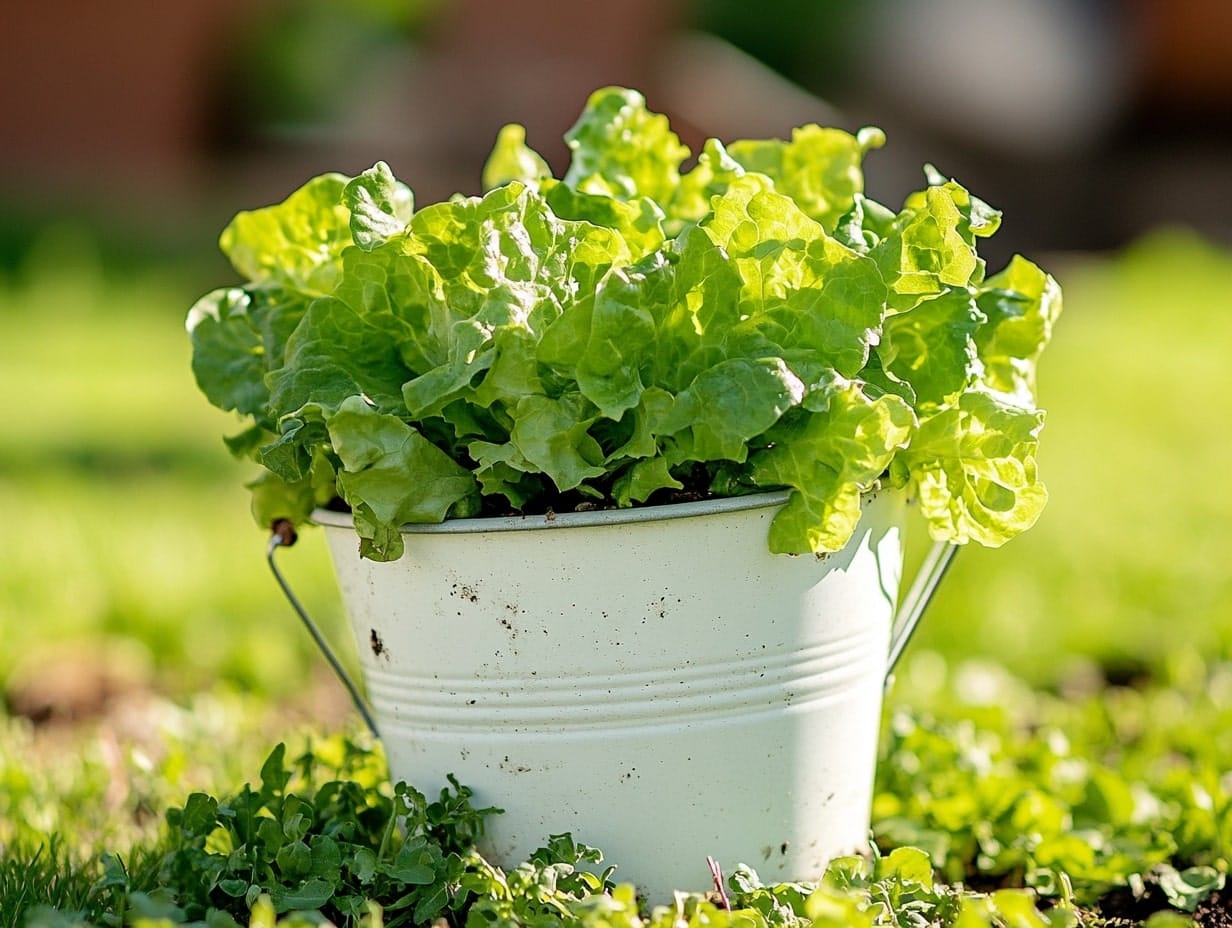
Not all plants thrive in confined spaces. Small to medium-sized plants like lettuce, herbs, radishes, and strawberries work best.
Dwarf varieties of tomatoes, peppers, and beans are also excellent choices. Consider companion planting—such as pairing marigolds with vegetables—to enhance growth and deter pests.
Monitor Watering Regularly

Containers dry out faster than garden beds, so consistent watering is key. Water deeply until it drains through the bottom, ensuring roots receive adequate moisture.
Check the top inch of soil daily and adjust watering frequency based on weather conditions. Using mulch can help retain moisture and reduce evaporation.
Fertilise for Growth
Since nutrients deplete quickly in bucket gardens, regular fertilisation is vital. Apply balanced fertilisers every 2–3 weeks, or use slow-release granules to sustain plant health.
Organic options like fish emulsion or compost tea provide steady nutrition without introducing harmful chemicals into the soil.
Protect from Temperature Extremes
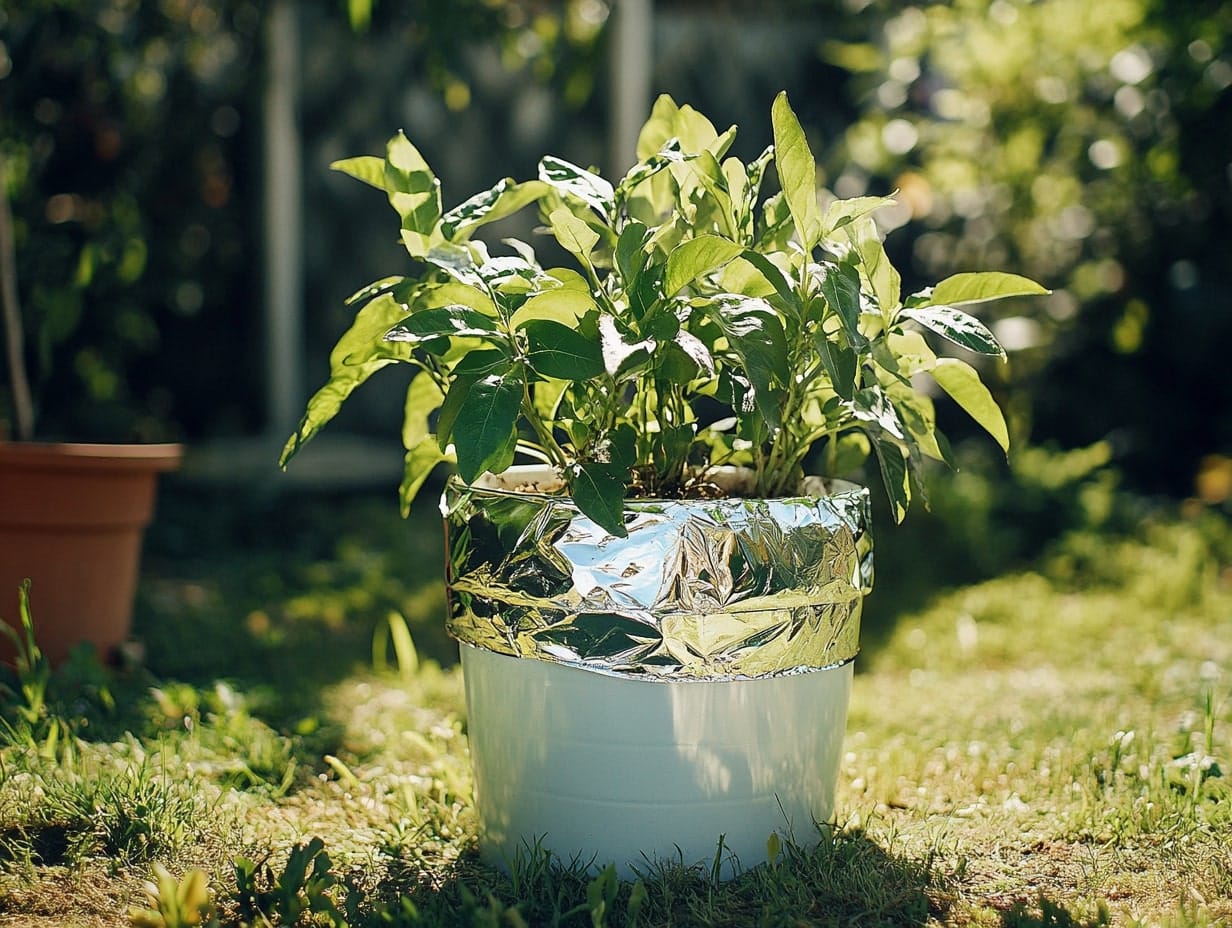
Buckets are more exposed to temperature fluctuations than garden beds. During summer, they can heat up, potentially damaging roots.
Wrapping buckets in light-coloured fabric or using reflective materials can keep them cool. In winter, bring buckets indoors or add insulation to protect plants from frost.
Incorporate Vertical Supports

For vining or climbing plants like cucumbers, beans, and peas, integrate trellises, stakes, or tomato cages into your bucket setup.
These structures save space and allow plants to grow upward, improving airflow and reducing disease risks. They also make harvesting more convenient.
Harvest and Prune Regularly
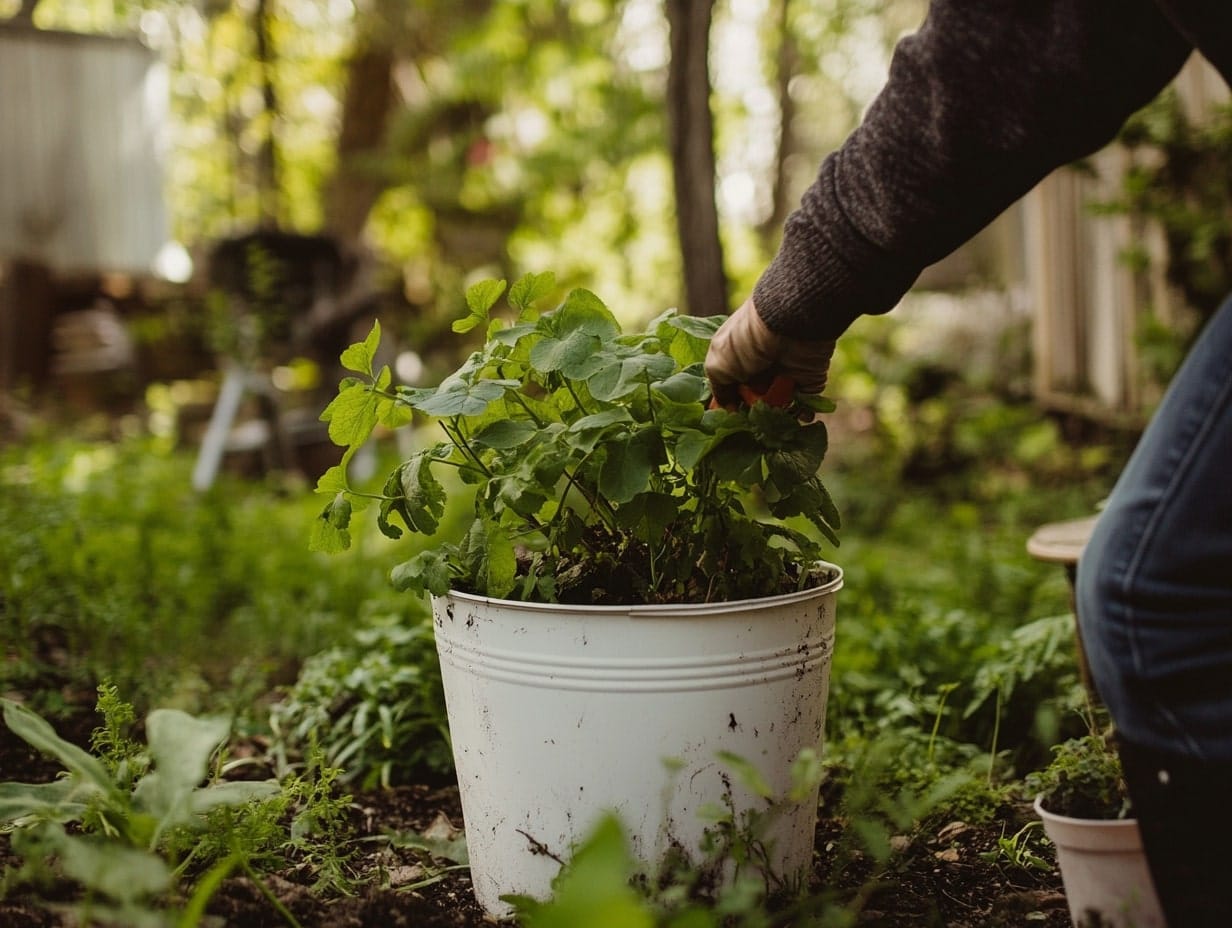
Pruning and harvesting keep plants healthy and productive. Remove dead or yellowing leaves to direct energy toward new growth.
Regularly picking fruits and vegetables encourages plants to produce more, preventing them from becoming too heavy for the confined space.
Experiment with Layering and Design
Arrnge buckets creatively to make your garden visually appealing. Use tiered stands or vertical shelves for a cascading effect, or group buckets with similar plants to create themed sections.
Incorporating flowers alongside vegetables adds colour and attracts pollinators, enhancing your garden's ecosystem.
Reuse and Repurpose
Repurpose old or discarded buckets to minimise waste. Upcycling promotes sustainability while allowing you to personalise your containers with paints or decals.
Just ensure any reused buckets are thoroughly cleaned and safe for plants.
Pest Management
Pests are a concern even in bucket gardens. Use natural deterrents such as neem oil, garlic sprays, or companion plants like basil to keep them at bay.
Inspect plants weekly for signs of infestation, and address issues promptly to maintain plant health.
Rotate Crops for Health
Crop rotation isn’t just for large gardens—it benefits bucket setups too. Avoid planting the same crops in the same soil every year to prevent nutrient depletion and disease buildup.
Rotating plants rejuvenates the soil and improves overall garden productivity.
Mix Edible and Ornamental Plants
Combining edible plants with ornamentals creates a bucket garden that's both practical and beautiful.
Growing basil or parsley alongside flowers like nasturtiums adds vibrancy while also deterring pests. This approach brings aesthetic and functional value to your space.
Cultivating Success with Bucket Gardening
Bucket gardening offers a flexible and rewarding way to grow plants, regardless of space constraints or gardening expertise.
With careful planning, proper care, and a touch of creativity, your bucket garden can flourish, providing fresh produce, vibrant flowers, or even a relaxing green retreat.
By following these detailed tips, you’ll discover the joy of gardening on your own terms, proving that even the humblest of containers can yield boundless possibilities.
